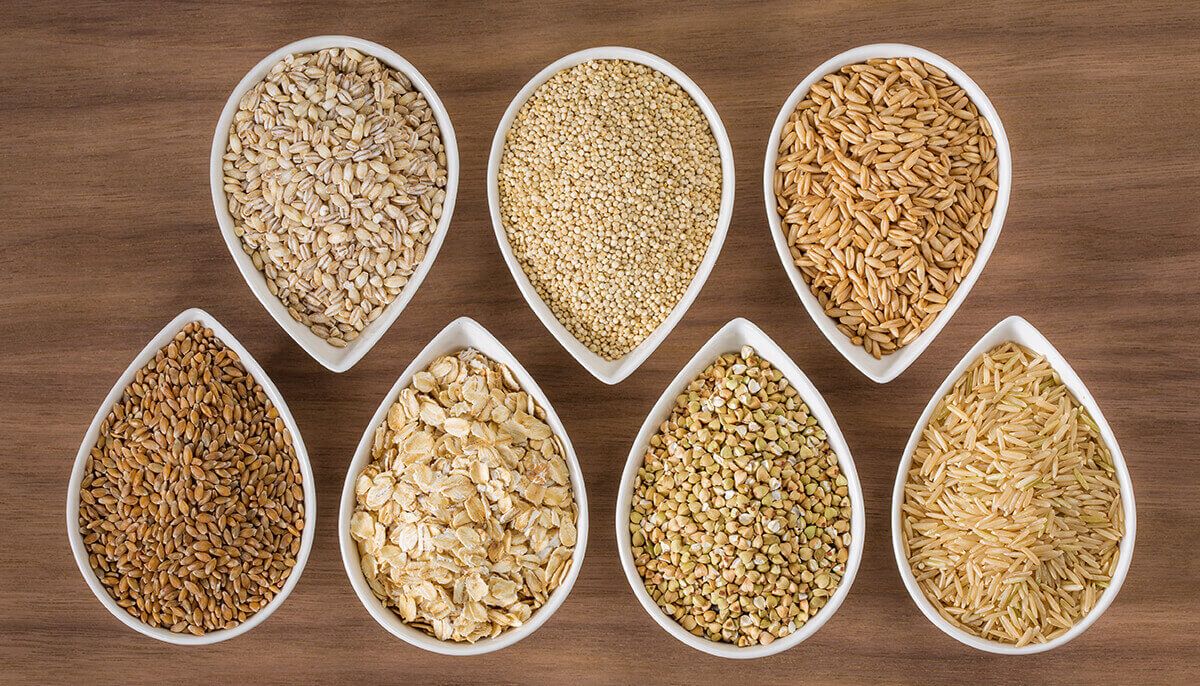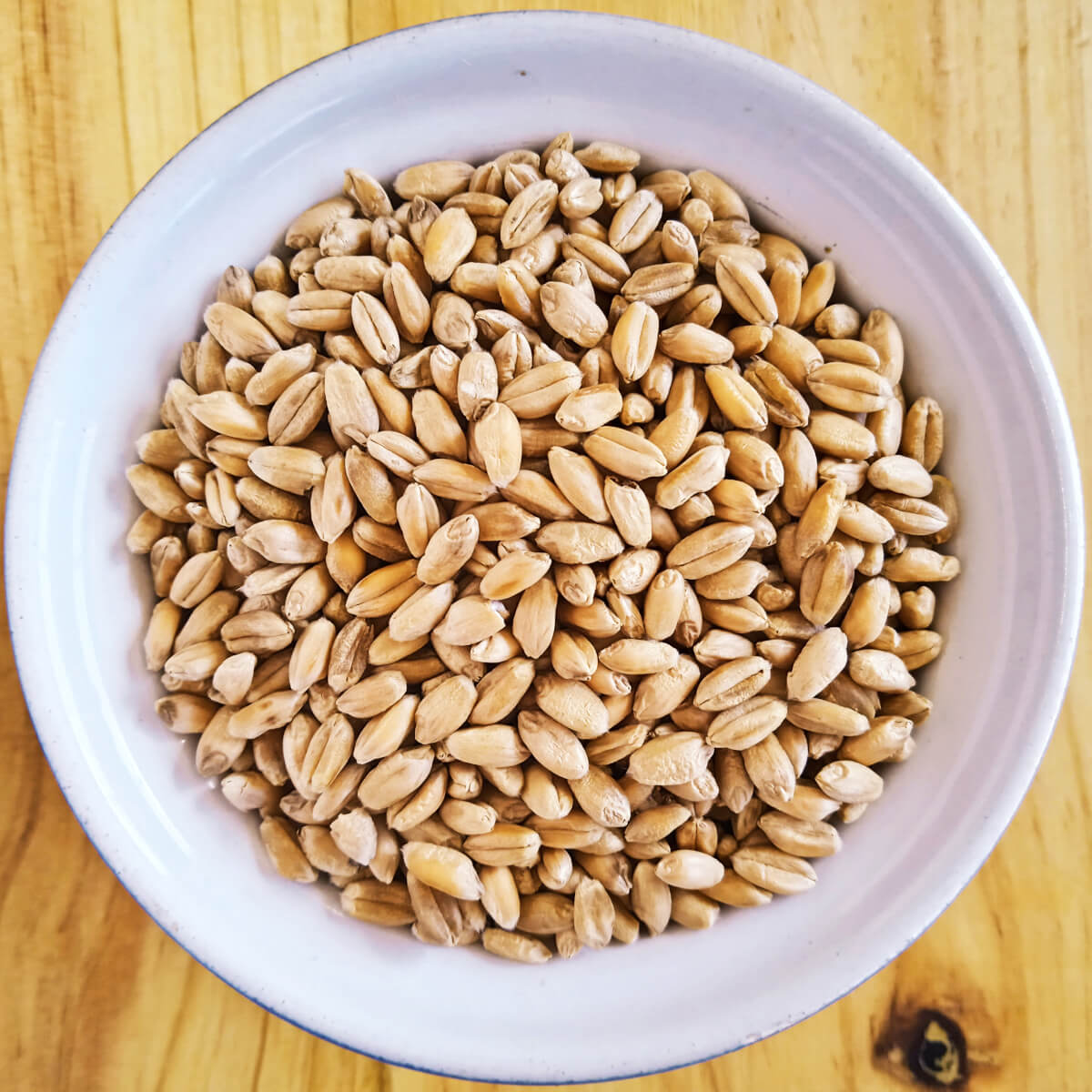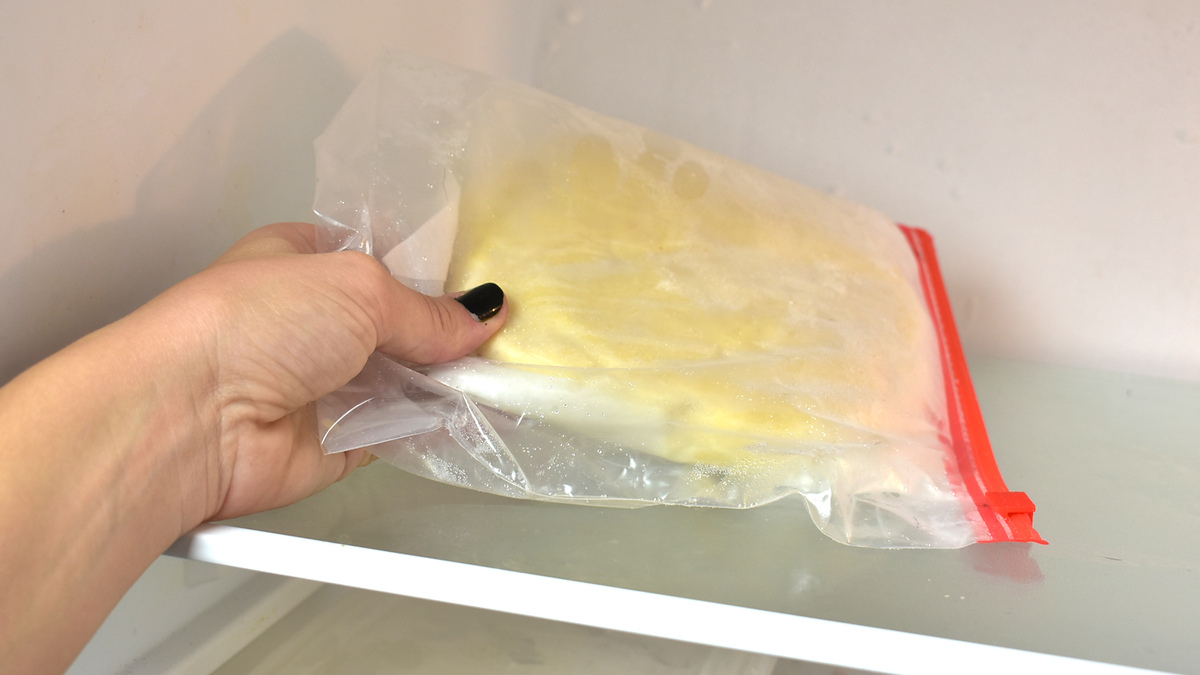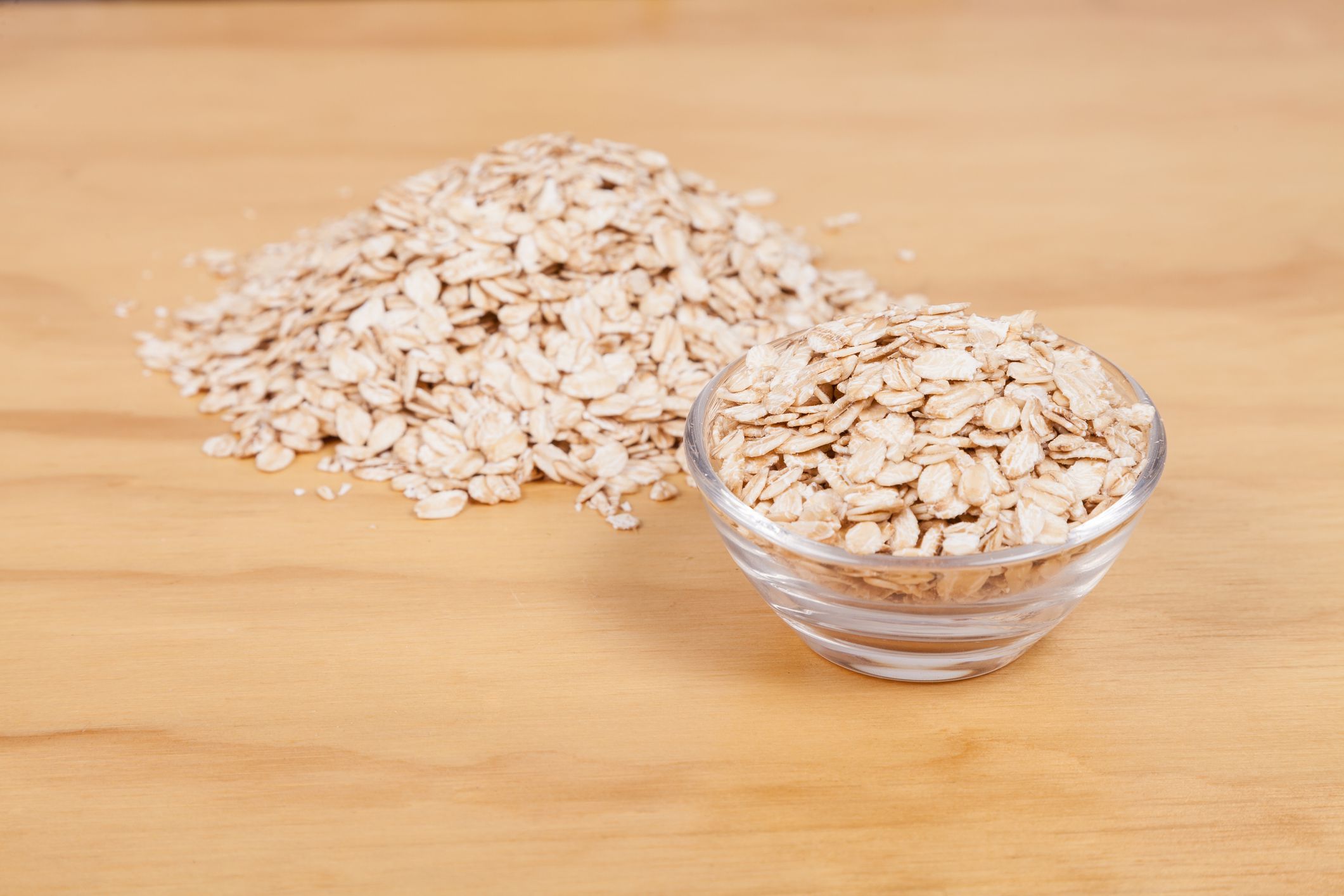

Articles
How To Store Grains
Modified: December 7, 2023
Learn how to store grains properly and keep them fresh for longer with our informative articles. Discover tips and techniques to maintain the quality of your grains and prevent spoilage.
(Many of the links in this article redirect to a specific reviewed product. Your purchase of these products through affiliate links helps to generate commission for Storables.com, at no extra cost. Learn more)
Introduction
Properly storing grains is essential to maintaining their freshness, flavor, and nutritional value. Whether you’re stocking up on staples like rice and wheat or experimenting with ancient grains like quinoa and farro, knowing how to store them correctly will help extend their shelf life and ensure that they remain in optimal condition.
Storing grains involves more than just placing them in any random container. Factors such as temperature, moisture, and exposure to light can significantly impact their quality. This article will guide you through the process of choosing the right containers, cleaning and preparing the grains, and the ideal storage conditions for different types of grains.
By following these guidelines, you can help prevent spoilage, insect infestation, and loss of flavor, texture, and nutritional value in your stored grains.
Key Takeaways:
- Properly storing grains is essential for maintaining their freshness, flavor, and nutritional value. Choosing the right containers, creating ideal storage conditions, and regularly checking for spoilage are key to maximizing the shelf life of grains.
- Implementing proper storage techniques and consistently practicing good storage habits can ensure that your grains remain fresh, flavorful, and nutritious for an extended period. Whether in the pantry, refrigerator, freezer, or vacuum-sealed bags, maintaining ideal storage conditions is crucial.
Read more: How To Store Flatbread
Choosing the Right Containers
When it comes to storing grains, selecting the appropriate containers is crucial. The main goal is to keep the grains dry, protected from pests, and shielded from exposure to light.
Here are a few container options to consider:
- Airtight containers: Opt for containers with a secure, airtight seal to prevent air from entering and moisture from seeping in. Glass jars with rubber gaskets or food-grade plastic containers with tight-fitting lids are excellent choices. Make sure the containers are clean, with no lingering odors that could be absorbed by the grains.
- Mylar bags: These thick, foil-lined bags are designed to provide an additional layer of protection against air, light, and moisture. They come in various sizes and can be sealed with a heat sealer to prevent any air from entering.
- Vacuum-sealed bags: Using a vacuum sealer, remove as much air as possible from plastic bags before storing the grains. This helps slow down the oxidation process and extends the shelf life of the grains.
- Food-grade buckets: If you plan to store large quantities of grains, consider using food-grade plastic buckets with airtight lids. These buckets can hold a significant amount of grains and are stackable, making them ideal for long-term storage.
Regardless of the container you choose, ensure that it is clean, dry, and free from any contaminants before storing your grains.
Label the containers with the name of the grain and the date of storage to keep track of their freshness. This will help you rotate your stock and use the grains in a first-in, first-out manner.
By selecting the right containers, you can protect your grains from moisture, pests, and light, preserving their quality and flavor for an extended period.
Cleaning and Preparing Grains
Before storing your grains, it’s important to clean and prepare them properly. This helps remove any impurities, such as dirt, debris, and foreign particles, and ensures that the grains are in the best condition for long-term storage.
Here are some steps to follow when cleaning and preparing grains:
- Inspect the grains: Before cleaning, examine the grains for any signs of mold, insects, or damage. Discard any grains that appear spoiled or have an off smell.
- Rinse the grains: Rinse the grains under cold running water to remove any dirt or dust. This is especially important for grains like rice and quinoa, which can have residual starch or saponins.
- Soak, if necessary: Some grains, such as beans or lentils, may benefit from soaking before storage. Soaking helps soften the grains and can reduce cooking time.
- Dry the grains: After rinsing or soaking, spread the grains out on a clean kitchen towel or tray to air dry. Ensure they are completely dry before storing to prevent mold and mildew growth.
- Remove stones and foreign particles: Inspect the grains again and remove any stones, twigs, or other foreign particles that may have been missed during rinsing. These can cause damage to the container or spoil the grains over time.
By taking the time to clean and prepare your grains before storage, you eliminate potential contaminants and ensure that your stored grains remain fresh and free from any unwanted substances.
Proper Storage Conditions
The key to preserving the quality and longevity of grains lies in creating the ideal storage conditions. This involves controlling factors such as temperature, moisture, and exposure to light.
Here are some guidelines for creating the proper storage conditions for grains:
- Temperature: Grains should be stored in a cool, dry place with a stable temperature. The ideal temperature range for storing most grains is between 50-70°F (10-21°C). Avoid storing them in areas with extreme temperature fluctuations, such as near the stove or in direct sunlight.
- Moisture: Moisture is the biggest enemy of stored grains, as it can lead to mold growth, spoilage, and insect infestation. Aim to keep the moisture level below 10%. Use desiccants such as silica gel packets to absorb excess moisture in the storage containers.
- Light: Exposure to light can cause grains to deteriorate and lose their nutritional value. Store grains in a dark or opaque container to protect them from light. If using transparent containers, keep them in a dark cupboard or cover them with a cloth or paper.
- Air circulation: Although it’s important to keep grains in airtight containers, some airflow is necessary to prevent moisture buildup. Avoid storing grains in tightly packed containers, which can limit air circulation. Leave a small space at the top of the container to allow for proper ventilation.
- Pest control: To prevent insect infestation, consider adding food-grade diatomaceous earth or bay leaves to the storage containers to deter pests. Regularly inspect the containers for any signs of pest activity and take immediate action if needed.
Following these storage conditions will help maintain the quality, flavor, and nutritional value of your stored grains, ensuring they remain fresh for an extended period.
Storing Grains in Pantry or Cupboard
The pantry or cupboard is a common storage location for grains in many households. When storing grains in these areas, it’s crucial to consider factors such as temperature, moisture, and proper organization.
Here are some tips for storing grains in the pantry or cupboard:
- Choose the right spot: Select a cool, dry area in your pantry or cupboard to store the grains. Ensure that it is away from direct heat sources, such as the oven or stove, as excessive heat can accelerate spoilage.
- Use airtight containers: Transfer your grains to airtight containers to protect them from moisture, pests, and light. Glass jars with tight-sealing lids or food-grade plastic containers are suitable options. Label the containers with the name and date of storage for easy identification.
- Organize and rotate: Keep your grains organized by arranging them in a systematic manner. Place the oldest grains in the front and the newest ones at the back. This ensures that you use the grains in a first-in, first-out manner and minimizes the chances of spoilage.
- Monitor moisture levels: Regularly check the moisture levels in your pantry or cupboard. If it tends to be humid, consider using moisture-absorbing products like silica gel packets or storing the grains with a desiccant.
- Inspect regularly: Periodically inspect the stored grains for any signs of spoilage, insects, or mold. Discard any grains that appear discolored, have a foul odor, or show signs of pest infestation immediately to prevent contamination.
By following these guidelines, you can effectively store your grains in the pantry or cupboard, ensuring that they remain fresh, dry, and protected for an extended period.
Read more: How To Store A Bagel
Storing Grains in the Refrigerator
While storing grains in the refrigerator may not be necessary for all types of grains, certain varieties can benefit from the cooler temperatures and reduced humidity. Here are some guidelines for storing grains in the refrigerator:
- Select appropriate grains: Not all grains require refrigeration. Grains that are more susceptible to spoilage or have a higher oil content, such as whole wheat flour, flaxseeds, and nuts, can benefit from refrigeration. Other grains like rice or quinoa can be safely stored in the pantry.
- Proper packaging: Before storing grains in the refrigerator, transfer them to airtight containers or resealable bags to protect them from moisture and food odors. Ensure that the containers are completely dry before sealing them to prevent condensation.
- Utilize the crisper drawer: Place the containers of grains in the crisper drawer, which offers a controlled environment and helps maintain a more consistent temperature and humidity. This helps prevent moisture buildup and keeps the grains fresh for a longer period.
- Avoid strong odors: Keep grains away from strong-smelling foods like onions, garlic, or pungent cheese, as they can absorb these odors easily. Place the grains in a separate compartment or use odor-resistant containers.
- Label and date: Remember to label the containers with the name and date of storage. This ensures that you can keep track of the freshness of the grains and rotate them accordingly.
- Monitor shelf life: Not all grains have the same shelf life, even when refrigerated. Be aware of the storage guidelines for each grain and consume them within the recommended timeframe to maintain optimal quality.
Refrigerating grains can help extend their shelf life and preserve their nutritional value. However, it’s important to note that refrigeration can alter the texture of certain grains, such as rice or quinoa, making them drier. Therefore, consider your specific storage needs and the characteristics of the grains before deciding to refrigerate them.
Store grains in airtight containers in a cool, dark place to prevent spoilage and preserve freshness. Avoid storing near heat sources or in direct sunlight.
Storing Grains in the Freezer
If you want to maximize the shelf life of your grains and keep them in optimal condition for an extended period, storing them in the freezer can be an effective option. Freezing grains can help preserve their flavor, texture, and nutritional value. Here’s how to store grains in the freezer:
- Choose the right grains: Not all grains freeze well. Generally, whole grains, flour, and grains with high oil content like nuts and seeds are suitable for freezing. Grains like rice or quinoa can be stored in the pantry as refrigeration might affect their texture.
- Package properly: Transfer the grains to airtight containers or heavy-duty freezer bags to prevent air and moisture from reaching the grains. Squeeze out as much air as possible from the bags before sealing them, or use a vacuum sealer for an extra airtight seal.
- Label and date: Label each package with the name of the grain and the date of storage. This helps you keep track of the freshness and rotation of the grains.
- Freeze in small portions: Divide the grains into small portions based on your usage needs. Freezing in smaller packages allows you to thaw only the amount you need without repeatedly exposing the entire batch to fluctuating temperatures.
- Store in a stable freezer: Place the packaged grains in the coldest part of the freezer, away from the door or any areas where the temperature might vary. Ensure that the freezer maintains a consistent temperature of 0°F (-18°C) or below to prevent freezer burn and maintain the quality of the grains.
- Thawing and using frozen grains: When you’re ready to use the frozen grains, transfer them to the refrigerator to thaw gradually. Avoid thawing at room temperature as it can promote moisture absorption and spoilage. Once thawed, use the grains within a reasonable timeframe to enjoy their optimal taste and texture.
Freezing grains can significantly extend their shelf life, allowing you to enjoy them over a longer period. However, note that the texture of some grains may change slightly after freezing. Consider your storage needs and the characteristics of the grains before opting to freeze them.
Storing Grains in Vacuum-Sealed Bags or Jars
Vacuum-sealing grains is an excellent method for prolonging their shelf life by removing air and sealing them in airtight containers. This process helps prevent oxidation, moisture absorption, and the growth of bacteria or pests. Here’s how to store grains in vacuum-sealed bags or jars:
- Choose the right containers: Select high-quality vacuum-sealed bags or jars specifically designed for long-term food storage. Ensure that they are BPA-free and food-grade to maintain the integrity and safety of the grains.
- Fill the containers: Fill the bags or jars with the desired amount of grains, leaving some room at the top for sealing. Avoid overfilling to ensure a proper seal and prevent damage to the grains during the sealing process.
- Seal the containers: Follow the manufacturer’s instructions to vacuum-seal the bags or jars. This typically involves using a vacuum sealer machine or hand-held vacuum sealer to remove the air from the container and create an airtight seal.
- Label and date: Clearly label each bag or jar with the name of the grain and the date of storage. This allows for easy identification and helps you track the freshness of the grains.
- Store in a cool, dark place: Place the vacuum-sealed bags or jars in a cool area away from direct sunlight or heat sources. A pantry or cupboard is an ideal location. This provides a stable temperature and reduces the exposure of the grains to light, maintaining their quality over time.
- Monitor for leaks: Regularly check the vacuum-sealed bags or jars for any signs of leakage or compromised seals. If you notice any leaks or signs of air infiltration, reseal the container or transfer the grains to a new bag or jar to ensure their continued freshness.
Storing grains in vacuum-sealed bags or jars can significantly enhance their shelf life and preserve their flavor and nutrient content. By eliminating the presence of air, you create an optimal storage environment that keeps the grains fresh and protected.
Tips for Extending Grain Shelf Life
Proper storage is crucial for extending the shelf life of grains and maintaining their freshness and quality. Here are some additional tips to help you maximize the longevity of your stored grains:
- Buy fresh grains: Start with high-quality, fresh grains to ensure a longer shelf life. Purchase grains from reputable sources and check the packaging for the manufacturing or expiration date.
- Store in smaller quantities: Instead of storing all your grains in one container, divide them into smaller portions. This helps minimize the exposure to air and moisture when you open the containers, allowing the remaining grains to stay fresh for a longer period.
- Avoid temperature fluctuations: Aim to maintain a consistent storage temperature for your grains. Avoid placing them near heat sources or in areas prone to temperature fluctuations, such as near windows or vents.
- Rotate your stock: Practice FIFO (first-in, first-out) by using older grains before newer ones. This ensures that you consume the oldest grains first, reducing the chances of spoilage and waste.
- Keep track of storage time: Regularly check the expiration dates or recommended storage times for each type of grain. Use a marker or label to note the date of storage on the containers, assisting you in keeping track of their freshness.
- Avoid exposure to light: Light can lead to the degradation of grains, reducing their quality and nutrient content. Store grains in opaque or dark containers or keep them in a dark cupboard or pantry to protect them from light exposure.
- Do not mix old and new grains: When restocking your grains, avoid mixing freshly purchased grains with the ones already in storage. The older grains may have absorbed odors or have a different moisture content, which can affect the freshness of the new batch.
- Regularly inspect for pests: Insects and pests can infiltrate storage containers and spoil the grains. Regularly check the containers for any signs of infestation, such as webbing, holes, or live insects. If you notice any, remove and discard the affected grains immediately.
- Consider freezing grains: For long-term storage, grains with a longer shelf life can be stored in a freezer to extend their freshness. Ensure proper packaging and consider vacuum-sealing them for optimal preservation.
- Use an airtight container within a container: For added protection, store the containers of grains within a larger airtight container, such as a sealed plastic box or bin. This provides an extra layer of defense against moisture and pests.
By following these tips, you can effectively extend the shelf life of your grains, reducing waste and ensuring they remain fresh and flavorful for a longer period.
Read more: How To Store Granola
Checking and Discarding Spoiled Grains
Regularly inspecting your stored grains is essential to identify any signs of spoilage or contamination. Discarding spoiled grains is crucial to prevent the spread of mold, bugs, or unpleasant flavors. Here’s how to check and discard spoiled grains:
- Look for visible signs: Examine the grains for any visible signs of spoilage, such as mold, discoloration, or unusual texture. Discard any grains that appear discolored, have a foul odor, or show signs of insect infestation.
- Inspect for off smells: Pay attention to the smell of the grains. If you notice any off or rancid odors, it’s a clear indication that the grains have spoiled and should be discarded.
- Check for pest activity: Look for signs of pests, such as webbing, holes, or insect carcasses. If you find any evidence of bug infestation, dispose of the affected grains immediately to prevent further damage.
- Monitor moisture levels: Moisture can lead to spoilage and the growth of mold or bacteria. Check the moisture levels of your stored grains regularly and discard any grains that have absorbed excess moisture or have become damp.
- Observe changes in texture: Changes in texture, such as clumping or stickiness, can indicate spoilage or the presence of moisture. If the grains no longer have their typical texture, it’s safer to discard them.
- Trust your senses: Your senses of sight, smell, and touch are valuable tools in determining the freshness of your grains. If anything seems off, err on the side of caution and dispose of the grains.
When discarding spoiled grains, it’s important to ensure they are properly disposed of to prevent contamination. Seal them in a plastic bag and place them in the trash bin or compost, depending on local regulations and composting guidelines.
Regularly checking and discarding spoiled grains helps maintain the quality and safety of your stored grains, ensuring that you consume only fresh and flavorful products.
Conclusion
Properly storing grains is crucial for maintaining their freshness, flavor, and nutritional value. By following the guidelines outlined in this article, you can extend the shelf life of your grains and ensure that they remain in optimal condition.
Choosing the right containers, such as airtight jars or vacuum-sealed bags, helps protect grains from moisture, pests, and light exposure. Cleaning and preparing the grains before storage removes impurities and ensures they are in the best condition for long-term storage.
Creating the proper storage conditions, including controlling temperature, moisture, and exposure to light, is essential for preserving the quality of the grains. Whether you opt to store grains in a pantry or cupboard, refrigerator, freezer, or using vacuum-sealed bags, maintaining the ideal storage conditions helps prevent spoilage and preserves taste and nutritional value.
Additional tips, such as rotating your stock, monitoring for pests, and checking for signs of spoilage, contribute to extending the shelf life of grains. Promptly discarding any spoiled grains ensures that they do not contaminate the rest of your stored grains.
By implementing these storage techniques and consistently practicing good storage habits, you can enjoy the benefits of fresh, flavorful, and nutritious grains for an extended period. Whether you’re stocking up on pantry staples or experimenting with specialty grains, proper storage ensures that your grains are always ready to be used in your favorite dishes.
Frequently Asked Questions about How To Store Grains
Was this page helpful?
At Storables.com, we guarantee accurate and reliable information. Our content, validated by Expert Board Contributors, is crafted following stringent Editorial Policies. We're committed to providing you with well-researched, expert-backed insights for all your informational needs.














0 thoughts on “How To Store Grains”